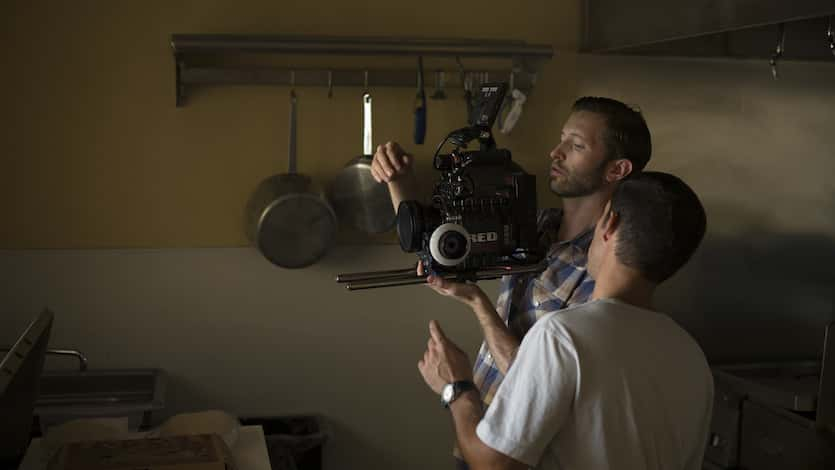One of the most stressful days for many marketing professionals is being present on the first corporate video shoot their company has commissioned. With film production not being an ordinary part of most peoples’ jobs, they aren’t sure what to expect, how the process normally goes, and how to judge whether it is progressing smoothly. Because of the uncertainty involved, a production day can often be stressful and seem disorganized even when all is going well. To give you some peace of mind, let’s go over some common issues and observations to let you know what to expect:
- The time before the first shot is almost always the longest wait. Whenever a videographer shows up to a shoot, he or she must deal with a large assortment of equipment, meet and greet the client, and often perform a brief walkthrough of the shooting location. If the first task is an interview, the setup time could be substantial. The feeling of nervousness and anxiety isn’t unique to non-film people, either. When I started as a director, I always felt nervous and worried we were behind schedule because setup just takes a lot of time. With greater experience, a film professional starts to realize that preparation and setup is hugely time consuming, but once the camera starts rolling, the process speeds up considerably.
- Constant tweaks to lighting, audio, camera, and other gear is normal. Just because the videographer keeps adjusting the lighting setup doesn’t mean they are unsure or conflicted about their job. Most filmmakers are perfectionists, especially the good ones, and they are likely noticing some small shadow in the background or to the corner of a shot and trying to kill it. Most people may not notice the subtle changes and adjustments, especially because they may be barely visible to the eye, but on camera they make a difference.
- Videographers and crew are focused on their own workflow. Though tough to understand from a business perspective, the videographer is more artist than businessman. As such, providing “direction” for technical details relating to framing and composition is intrusive and often insulting to many videographers, especially ones who are more temperamental. As far as the videographer is concerned, they work for the production company, not for the client. A surprising number of clients with the best intentions believe because they have seen movies, they understand how the filmmaking process works. Their direction is poor and lacks understanding of how filmmaking works, which then creates a rift between the videographer and the marketing professional. Sometimes, we hear of a “rough” working relationship between the two even while seeing beautiful footage come back from the shoot. Keep in mind that just because the videographer wants to shoot their way doesn’t mean the shoot went poorly or that they were being uncooperative. They just know ultimately the paycheck comes from the production company, so their loyalty lies with acquiring the best possible footage. Let them exercise their best judgment, which is usually built on years and years of knowledge and experimentation.
- Someone is standing around doing “nothing.” This only applies on larger shoots with a decent sized crew, but a joke in the film industry is the saying, “Hurry up and wait.” In general, film work involves fast and furious work for short periods of time, then waiting for someone else to do the same. For instance, the grip and electric crew works furiously to light a set while the camera department has already finished their setup. Meanwhile, the makeup artist just finished their work and they have nothing else to do at the moment either. When the cameras start rolling, makeup is ready to make touchups, the camera department is working hard, and now the grip and electric department has a break (except perhaps minor adjustments) waiting for the next setup. The collaborative nature of larger shoots means periods of down time for many positions, especially something like production sound where they’re often ready to roll a long time before the camera department.
- The videographer seemingly isn’t using all allocated time. Most schedules are built to accommodate some leeway in case of technical difficulties or another part of the schedule going over its allocated time. As such, a senior living community shoot may have 30 minutes devoted to filming the seniors playing cards, but in reality a videographer may only need 10 minutes. The finished video is going to be 2-3 minutes long most likely, so after capturing some close-up shots, some inserts of the cards, a slider shot of the room in general, and a variety of shots of the game, any experienced videographer knows he is giving the editor more than enough material for the 10-15 seconds of the activity that will likely make the finished video. Don’t be alarmed if the videographer doesn’t use every minute allocated on the schedule for the activity. In my experience, newer, less experienced videographers are more concerned and worried about what the client thinks on the day of the shoot, while veteran, experienced videographers are focused on the edit and knowing they have the best possible footage for a great finished video.

